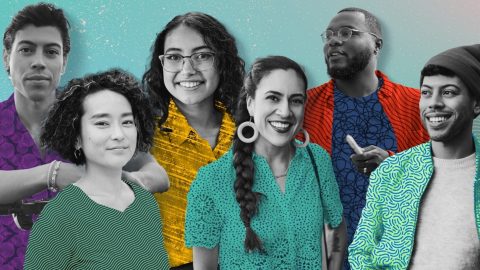Steve Gleason Joins Microsoft Employees at //Oneweek Hackathon to Make Surface More Accessible
In February, in a one-minute Super Bowl commercial, Microsoft and former NFL safety Steve Gleason showed the world how the Surface can empower us all.
As helpful as the technology in that commercial was, both Gleason and Microsoft knew it could be even better. This week we will team up again to make Surface more accessible and powerful as part of our company-wide hackathon, when 5,000 employees will combine their curiosity and passion to improve Microsoft products and platforms. It is part of //oneweek, which kicks off a year of innovation, cooperation, new priorities, and obsession over our customers.
Since Gleason was diagnosed with amyotrophic lateral sclerosis, or ALS, four years ago he has embraced the Microsoft Surface enabled with Tobii eye tracking. As he loses control of his muscles due to the progressive nature of the disease, it enables him to continue so much of what is at the center of his life, as a father, a husband and an advocate. Today, Gleason controls much of his world with his eyes. He reads stories to his three-year-old son Rivers, writes, communicates, and works as an advocate for others with ALS using his Surface Pro 3.
“Until there is a medical cure for ALS, technology is that cure,” Gleason often says.
Through his foundation, Team Gleason, he brings the Surface and other innovative technology to people with ALS, and recently opened the Team Gleason House for Innovative Living that is equipped with much of the technology he personally uses. By providing this technology, he empowers those with limited physical abilities to live as independently as possible.
Caption: Steve Gleason at home with his father-in-law and team Gleason executive director Paul Varisco
“Technology is my voice, it gives me the power to communicate,” Gleason says. “Technology can give that voice to so many. It’s not just me, but people with ALS, and those with and without disabilities.”
As powerful as the Surface Pro 3 is, Gleason knows it can be even more accessible. Since the Super Bowl, he has sent Microsoft a list of proposed improvements, including better predictive typing software and larger fonts. His ideas reflect the spirit of this week’s company-wide hackathon, when our employees team up to challenge, adapt and improve our products and services with more than 2,000 suggested hacks.
Microsoft listened and invited Gleason to the hackathon to explore his ideas in work hosted by the Microsoft Ability Community. Gleason will work with a diverse team of Microsoft engineers and accessibility experts to fix one of his biggest challenges, turning his Surface on and off with his eyes. Gleason will be at the heart of the Ability Hackathon, meeting with members of the Surface team, as well as internal and external members of the disability community considering dozens of proposed hacks that could help people with disabilities.
“I specifically sought out an accessibility hack because I truly believe we can change lives with our technology. I am so energized by the enthusiasm and curiosity everyone is bringing to this project and by the Ability Hack: Eye Gaze team’s technical ability to adapt our technology and solve problems. There’s nothing more satisfying than collaborating on a project of this nature,” said Nancy Crowell, a member of the Ability Hack: Eye Gaze team and a Content Developer at Microsoft.
This partnership and others like it reflect the company’s commitment to create the most accessible technology in the world. The partnerships marry the power of Microsoft design with people with disabilities, such as Gleason, who understand better than anyone the problems that need to be solved.
At Microsoft, we understand that forging these partnerships and having employees with disabilities at the center of our work will drive us to adapt and create even better and more accessible products and services for the more than 1 billion people with disabilities around the world.
Caption: NFL Safety Steve Gleason at the New Orleans Saints training facility during filming of the Microsoft Super Bowl commercial
Accessibility solutions that emerge from these partnerships will enable people of all abilities. Why? This work is driven by people-centric design, a core Microsoft approach to create technology that adapts to an individual’s changing needs, whether those needs change due to ALS, aging or other reasons.
“People-centric design is about innovations that have the potential to benefit us all – innovations such as gesture control, speech recognition and touch. As these innovations continue to mature, they have the potential to make the experience for people with disabilities richer than ever, while making the experience more appealing and useful to everyone,” Microsoft Chief Accessibility Officer Rob Sinclair said.
Consider breakthroughs in eye-tracking technology used by Gleason and others with ALS. With a Surface Pro 3 and eye-tracking systems from Tobii, Gleason can control a lot of his environment, whether it’s raising blinds on his windows or playing video games. And someday he envisions everyone playing video games, typing, and controlling computers with their eyes.
“Any technology that benefits people with physical limitations can only enhance everyone’s ability to move faster and more efficiently in their world,” Gleason says.
We look forward to having Steve join us on campus this week and expect his perspectives and ideas will help Microsoft continue to create technology that is more accessible and powerful for people of all ages and abilities around the world.
Read more about the hackathon at the Microsoft News Center.









